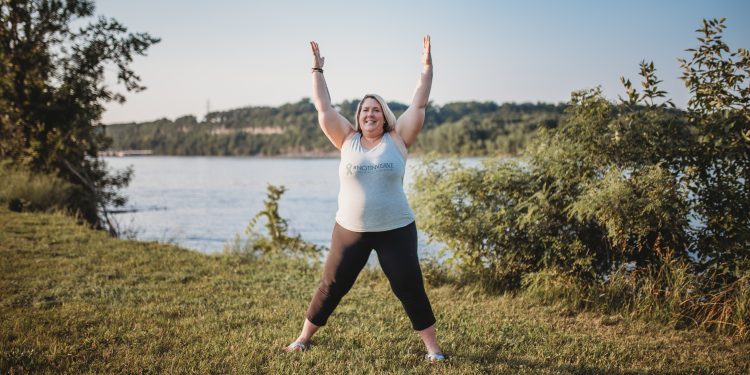by Amy Zellmer | Editor-in-chief
Yoga is a powerful tool for recovery after brain injury. Contrary to some beliefs, EVERYONE can do yoga — you don’t need to be super flexible, have great balance, or even be able to stand up. The beauty of yoga is that every pose can be modified so that anyone can be accommodated.
An important aspect of yoga is the breath. Connecting the breath to your body and flow, and getting oxygen flowing to your brain, is what makes it so powerful for recovery. Yoga is also a time to quiet the mind, letting anxiety and distracting thoughts drift away.
Star Pose (Utthita Tadasana) is one of the basic building blocks in yoga, and is a powerful pose as it engages almost every muscle in your body. It can also be easily modified. Star Pose strengthens and lengthens the body in all directions at once, and helps align the spine, which improves posture and can reduce back and shoulder pain. It opens the chest and underarms, which allows you to be more open to feelings of love and happiness.
Instructions:
- Stand with your feet wide apart and arms out to the side.
- Press your weight into your feet, squeeze your thighs, tuck your tailbone, and feel your legs strong, solid, and rooted into the floor.
- Reach through the fingertips, broaden across your collarbones, and press your shoulder blades toward the back ribs.
- Inhale, elongate the neck, and press the crown of the head up towards the sky, look straight ahead with your chin parallel to the floor (remember to relax your shoulders down).
- Inhale deeply into your belly and chest; exhale while pressing into your feet, fingers, and crown. Feel your body expand out in all 5 directions. Keep breathing and hold for 3-5 breaths.
- To release, bend one knee and step feet together while bringing your arms down to your sides.
Modifications:
- To make the pose more challenging, you can raise your arms higher (see photo).
- For a challenge, close your eyes while in the pose.
- If you have poor balance, you may do the pose against a wall for support.
- For stability, you can bring your feet closer together, and/or place your hands on your hips.
- You may also do the pose seated in a chair or lying on the floor.
If you are interested in learning more about yoga, check out
www.loveyourbrain.com and their yoga programs throughout the US at partner studios, which are completely free to brain injury survivors and caregivers.











